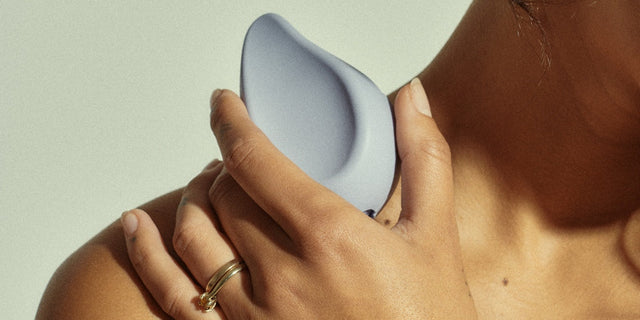Before you start reading. Have you done your pelvic floor exercises today?
More than likely you answered no to the above question. (Snaps for you if you answered yes!). For most women, the pelvic floor is out of sight, out of mind. We often don’t even think about it until something goes wrong or we can no longer do the things we used to be able to do. Like sneeze and pee separately.
My name is Kimmy Smith, and I am a personal trainer and yoga teacher specialising in postnatal health and well-being. I am also the creator of the Fit Mummy Project App - a complete postnatal fitness and well-being App for Mums. Since giving birth to my firstborn, I have struggled with pelvic organ prolapse and incontinence. So I am especially passionate about helping Mums to regain and strong and functional pelvic floor.
If you are one of those women who know you need to do your pelvic floor exercises but never quite gets around to it - this post is for you! We will not only have you motivated to tone and strengthen your pelvic floor but also guide you through fun ways to do it.
Before we start. What is the Pelvic Floor?
Your pelvic floor is a combination of muscle, ligaments and fascia that sit in your pelvic bowl. Your pelvic floor connects to your tailbone and the back, your pubic bone at the front and your sit bones on either side. It acts like a hammock or sling to support your bowel, bladder, and uterus.Why is the pelvic floor important?
Your pelvic floor strength and function is important for so many reasons. Here are a few of my favourites:- A strong pelvic floor will help to keep your insides-inside. When your pelvic floor is weakened, you can be more susceptible to pelvic organ prolapse. A condition where your pelvic organs, bladder, uterus or bowel can prolapse and bulge into your vaginal wall.
- A strong pelvic floor may help to reduce the symptoms of incontinence. Incontinence is said to affect 37% of Australian Women. I like to take a two pronged approach to incontinence, by working on my pelvic floor strength to help reduce the incontinence and wearing supportive underwear like ModiBodi to prevent any leaks from ruining my day. They have a full range including active undies for practicing yoga or running and more supportive ones that I wear in the days leading up to menstruation as incontinence can often get worse just before your period arrives.
- A strong pelvic floor can improve sexual pleasure and confidence. This is a big one for new Mums who can often feel a lack of sensation or control during sex.
- Your pelvic floor is a vital part of your ‘core’. Building a strong pelvic floor is one of the keys to creating a strong and toned body after baby and also avoiding injury.
- When we leak or feel like something is wrong ‘down there’ it can stop us from exercising or taking part in certain activities. This can have mental and emotional rollover effects.
How do you contract the pelvic floor muscles?
This is a really hard one to put on paper. Studies have shown that around 65% of people who think they know how to contract their pelvic floor muscles are doing it incorrectly.* www.dianelee.ca
My number #1 tip when it comes to pelvic floor is to have your pelvic floor and core strength assessed by a Physio specialising in Women’s Health and Continence. I have worked with some amazing physios to help me to regain my pelvic floor and core strength after baby. A good physio will assess your pelvic floor and core function. They will give you a personalised program to strengthen and tone your pelvic floor and they will help you to build back to the types of exercise that you enjoy doing.
To contract the pelvic floor it is often helpful to use a visualisation tool.
Here are some of my favourite cues
Clock. Imagine the walls of your vagina like the numbers on a clock. Your pubic bone is 12 o’clock. Your tailbone is 6 o’clock, your two sit bones are 3 o’clock and 9 o’clock. Take a deep breath in. On the exhale engage all 4 sides of the clock by drawing in from 6 o’clock, then 12 o’clock and then 3 and 9 o’clock. Lift your pelvic floor up from the centre before fully releasing.
Flower. Similar to the clock analogy, imagine the 4 walls of your vagina like an open flower with 4 petals. Draw the four petals into the centre and lift the closed bud. Take a breath into hold and exhale to fully release.
My Tip. Don’t forget to breathe. You should be able to engage and lift your pelvic floor whilst maintain a neutral breath.
What are some basic pelvic floor exercises we should all be doing?
Just like a weights program, there are different types of pelvic floor exercises.
Endurance holds. Here you are trying to maintain a pelvic floor contraction for an extended period of time.
- Start with engaging your pelvic floor using whatever cue you like the best (having been to see a Women’s Health Physio will really help you to feel confident that you are getting a good engagement).
- Hold the contraction for the length of one inhale and then full release on the exhale. This should be a 3-4 second hold.
- Have a 10 second rest before repeating for 8 or so rounds.
- Slowly build up by increasing by 1 to 2 seconds each day.
Power Lifts. I think of these as the ones that stop me peeing my pants when I sneeze. Fun right! Engage your pelvic floor as quickly and powerfully as you can and then fully release. Lift straight back up with no rest in between. Aim for 10 power contractions.
Functional Movement. Combine your pelvic floor exercises with function movements such as squats, lunges and push ups. Download the Fit Mummy Project App for a 9 minute pelvic floor workout that will show you how to combine pelvic floor exercises into a full body workout. Plus you’ll get a bonus 34 other strength, yoga, meditation and barre videos designed just for busy Mums.
Watch Out! These exercises might undo all your hard work!
- Heavy Lifting. Lifting weights that are too heavy for you to lift whilst maintaining core control.
- Ab Crunches + Twists. Exercises like crunches, planks holds, twists, V-Sit Ups and weighted ab exercises can put too much downward pressure on your pelvic floor and can also make stomach separation worse. Best to avoid them if you have any pelvic floor or core issues and try some post-natal specific core exercises [Link http://www.kimmysmithfit.com/post-natal-fitness-core-restore-program/] instead.
- Jumping exercises like squat jumps, box jumps and skipping.
- Sprinting or long distance runs on hard surfaces.
How do you know if something is wrong with your pelvic floor?
I asked this question to Women’s Health Physio Lyz Evans of Women In Focus. This was her answer.
In my experience, women know deep inside that something isn’t right, however decide to ignore it in the hope that the problem will disappear and they don’t have to deal with it! As a rule of thumb, if the problem still exists at 3 months postnatal it wont resolve on its own, so some guidance is necessary.
After having a baby women should ask themselves the following questions to help work out if anything is wrong.
- Do you leak urine when you cough, sneeze, blow your nose, or exercise?
- Do you leak urine on approach to the toilet or have you had an unexpected accident when you didn’t think you needed to go?
- Do you find it difficult to control your bowels (wind or stool)?
- Do you feel a sense of heaviness/ dragging in the vagina or rectum?
- Do you feel something protruding from your vagina?
- When you pass urine on the toilet, does it seem different to before?
- Is sexual intercourse painful or lacking in sensation?
Ladies, if you answered Yes to any of these questions, then please get yourself to a Women’s Health Physiotherapist sooner rather than later. Good luck and I would love to hear what tricks you use to help you to stay motivated to do your pelvic floor exercises.
Kimmy recently took Modibodi for a road test, here's her review:
TRY MODIBODI FOR YOURSELF RISK FREE
Bio Kimmy Smith is the founder of the Fit Mummy Project App - the complete post-natal fitness and well-being App. Kimmy is also an ex-professional athlete, fitness instructor, qualified yoga teacher and mother to two girls. Kimmy is on a mission to support and empower women to embrace the journey of motherhood. In 2016, Kimmy launched the postnatal fitness and wellbeing hub, www.kimmysmithfit.com, an online destination that encompasses fitness, food and healthy mindset essentials including tips, advice, workouts, meal plans and recipes. It aims to help all new mums create a beautiful, fit and strong new body and life.
Connect with Kimmy below:
Facebook: @fitmummysquad Instagram: @kimmysmithfit Website www.kimmysmithfit.com











